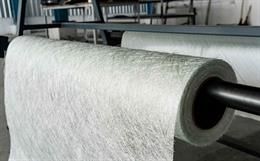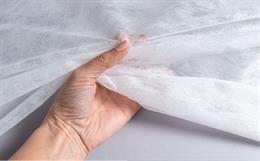Thecurrent mutation from metal to composites has given rise to importantchallenges for the aerospace and railway industries. These industries are inlarge demand of new polymeric materials with high thermal stability aspolyetherimide [1], poly (ether ether ketone) [2], polyethersulfone [3],phenoxy [4] or poly (phenylene sulphide) [5].
Thiswork, which falls within the framework of the European project IMS & CPS(Innovative Material Synergies & Composite Processing Strategies, 7thPCRD), aims at developing conductive yarns from combination betweenthermostable polymers and multiwalled carbon nanotubes (MWNT). The challengesare firstly to process thermostable polymers by melt spinning and secondly toincorporate, orientate and align MWNT in multifilament yarn to optimizeelectrical and mechanical properties.
Thesemultifilament yarns will be then incorporated by dissolution in the manufactureof composite materials with a specific localization and orientation at both thenano and microscales in the final composite part to enhance weight savings andmaterial properties.
APPROACH
Inthis work, the first approach is to study the implementation by melt spinningof a high performance amorphous polymers: Polyethersulfone PES (Tg ≈20C).Nanocomposites based on PES filled with MWNT have been prepared by extrusion.Due to the high temperature needed to process PES, a plasticizer is alsoincorporated. Thermal (TGA, DSC) and rheological characterizations (Melt FlowIndex (MFI)) have been made to determine experimental conditions and to analyzethe influence of the plasticizer and MWNT on spinnability. Electricalconductivity measurement on rods is also performed to predict the MWNT contentneeded to reach electrical percolation on multifilament yarn.
Thesecond approach focus on process of multifilament yarns and their electricaland mechanical properties. The impact of different parameters (draw ratio, MWNTcontent, etc.) on MWNT dispersion and alignment and on yarn properties isinvestigated.
RESULTS AND DISCUSSION
1- Melt Flow Index
MFI measurement is used to analyse spinnability and determine the spinning temperature condition. As shown in Fig.1 above, viscosity of PES is highly increased with the incorporation of plasticizer but decreases by rising MWNT content. This observation, due to a formation of a network of interconnected nanoparticles [6], is an important factor for the spinnability of the compounds.
The higher MWNT content, the more difficult melt spinning is. Plasticizer allows then easing process by melt spinning of compounds with higher MWNT content.
2- Electrical conductivity
The influence of MWNT content on electrical conductivity of PES rods is illustrated in Fig. 2. A significant increase of 10 decades is observed between 0.75 and 1 wt. % MWNT emphasizing the path from insulating to conductive character of the material. This phenomenon, called electrical percolation, is relatively low due to the amorphous character of the polymer which allows a better mobility of the nanofillers in PES.
Despite the electrical percolation in multifilament is attending to be reached at higher MWNT percentage [7], the percolation threshold on rods is a good indicator to know approximately the MWNT content allowing to obtain a conductive multifilament yarn.
3 - Mechanical properties
The draw ratio is another important parameter for MWNT dispersion and alignment, but also for mechanical properties of multifilament yarn. Due to its high Tg, PES multifilament yarn can be slightly drawn but significant difference can be observed for close draw ratios. Indeed, this parameter clearly affects young's modulus and elongation with respectively an increasing of around 1 Gpa of the Young's modulus and a loss around 50% in elongation at break (cf. Fig 3).
CONCLUSIONS
Melt spinning of thermostable polymers is a new challenge which requires the adaptation of new tools to a classical spinning machine. This also causes learning new techniques in order to obtain a final product of quality.
The structure and high Tg of Polyethersulfone (PES) make it very difficult to process. The first objective of this study is to find solution to spin PES and to analyze the influence of experiment conditions. The second challenge is to incorporate MWNT and obtain a conductive multifilament yarn by reaching electrical percolation and keeping good mechanical properties.
The addition of plasticizer is a good solution to help PES melt spinning by decreasing its Tg, increasing viscosity and making possible to incorporate higher MWNT content. Plasticizer and MWNT have a significant influence on multifilament yarn properties and a compromise must be found between electrical and mechanical properties.
FUTURE WORK
In the future, the incorporation of higher MWNT content in multifilament yarn and their dissolution in composites will be investigated. Moreover, other works will focus on the process of thermostable polymers by wet spinning.
Acknowledgment
We gratefully acknowledge financial support from the project IMS&CPS (Innovative Material Synergies & Composite Processing Strategies) - a European Integrated Project supported through the Seventh Framework Programme for Research and Technological Development.
Moreover, we thank Guillaume Lemort (GEMTEX) for his help during extrusion and spinning experiments.
References
1. S-Y. Wu, Y-L. Huang, CoCo Ma, S-M. Yuen, CoCo Teng, SoY. Yang, "Mechanical, thermal and electrical properties of aluminum nitride/ polyetherimide composites," Composites: Part A 42, 1573-1583 (2011).
2. M. Sharma, J. Bijwe, P. Mitschang, "Wear performance of PEEKcarbon fabric composites with strengthened fiber-matrix interface," Wear 271, 2261-2268 (2011).
3. M. Sharma, J. Bijwe, P. Mitschang, "Abrasive wear studies on composites PEEK and PES with modified surface of carbon fabric:' Tribology International 44, 81-91 (2011).
4. K-C. Teng, F-C. Chang, "Singlephase and multiple phase therm 0 p I asti c/t h e rm os et polyblends: 2. Morphologies and mechanical properties of phenoxy/ epoxy blends:' Polymer 37 (12), 2385-2394 (1996).
5. B. Vieille, J. Aucher, L. Taleb, "Influence of temperature on the behavior of carbon fiber fabrics reinforced PPS laminates," Materials Science and Engineering A517 51-60 (2011).
6. I. Alig, T. Skipa, D. Lellinger, P. P6tschke, "Destruction and formation of a carbon nanotubes network in polymer melts: rheology and conductivity spectroscopy; Polymer 49, pp. 3524-3532 (2008).
7. A. Marcincin, M. Hricova, K. Marcincin, A. Ujhelyiova, D. Bonduel, M. Claes, J. Legen, Conference Lille3000 Futurotextiles Proceedings, Lille pp. 135146 (2006).
Paper presented at The Fiber Society's 2012 Spring Conference on "Fiber Research for Tomorrow's Applications" at St. Gallen, Switzerland (Courtesy: The Fiber Society)
This article was originally published in the New Cloth Market magazine, August, 2012.








